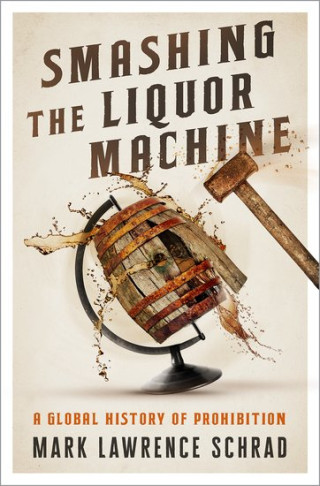Imagine a prohibitionist. The image that jumps to mind is probably of a well-to-do, conservative, white, Victorian-era prude—pinky raised, sipping tea—browbeating Americans with Bibles about what thou shall and shan’t drink. Look at Ken Burns and Lynn Novick’s Prohibition documentary miniseries: All of the characters are white. All of the experts and interviewed consultants are white. Over 5½ hours, virtually the only people of color are the entertainers in jazz-era speakeasies, behind a bouncy Wynton Marsalis score.
This white imagery is reinforced by a consensus among academic historians that American temperance and prohibition of the late 19th and early 20th centuries were products of a whitelash of rural, middle-class, white evangelicals “disciplining” the leisure of America’s growing urban, immigrant and African American communities. A keen trick in doing so is to equate prohibitionism with the Ku Klux Klan, even though prohibition in the American South predated the modern KKK by years, if not decades.
In reality, the exact opposite was true. America’s most vocal prohibitionists weren’t privileged white evangelicals, but its most marginalized and disenfranchised communities: women, Native Americans and African Americans. Indeed, temperance and prohibitionism worked hand-in-glove with other freedom movements—abolitionism and suffragism—that fought against the entrenched system of domination and subordination. Consequently, nearly every major Black abolitionist and civil rights leader before World War I—from Frederick Douglass, Martin Delany and Sojourner Truth to F.E.W. Harper, Ida B. Wells, W.E.B. Du Bois, and Booker T. Washington—endorsed temperance and prohibition.
The forgotten history of Black temperance challenges us today—as America is engaged in a collective reassessment of its own past—because it lays bare how Black activists and communities are still largely portrayed in the history books. Namely, they’re more often positioned as objects—disempowered, passive and subject to the whims of some other (white) actor—rather than actors in their own right, possessing their own power, capable of action, organization and resistance.
The secret to understanding Black prohibitionism—and prohibitionism more generally—is to realize that the liquor in the bottle, the morality of drinking, and the eternal fate of the drunkard’s everlasting soul were at best secondary concerns to temperance activists. Instead, the primary target of their ire was the liquor traffic: predatory capitalism and the immorality of getting one’s fellow man addicted to promote your own profit. If you look at the opioid epidemic today, and bristle at Big Pharma making billions by hooking vulnerable people on OxyContin and then bleeding them dry, 100 years ago you would probably have been a prohibitionist. Same thing, different drug.
